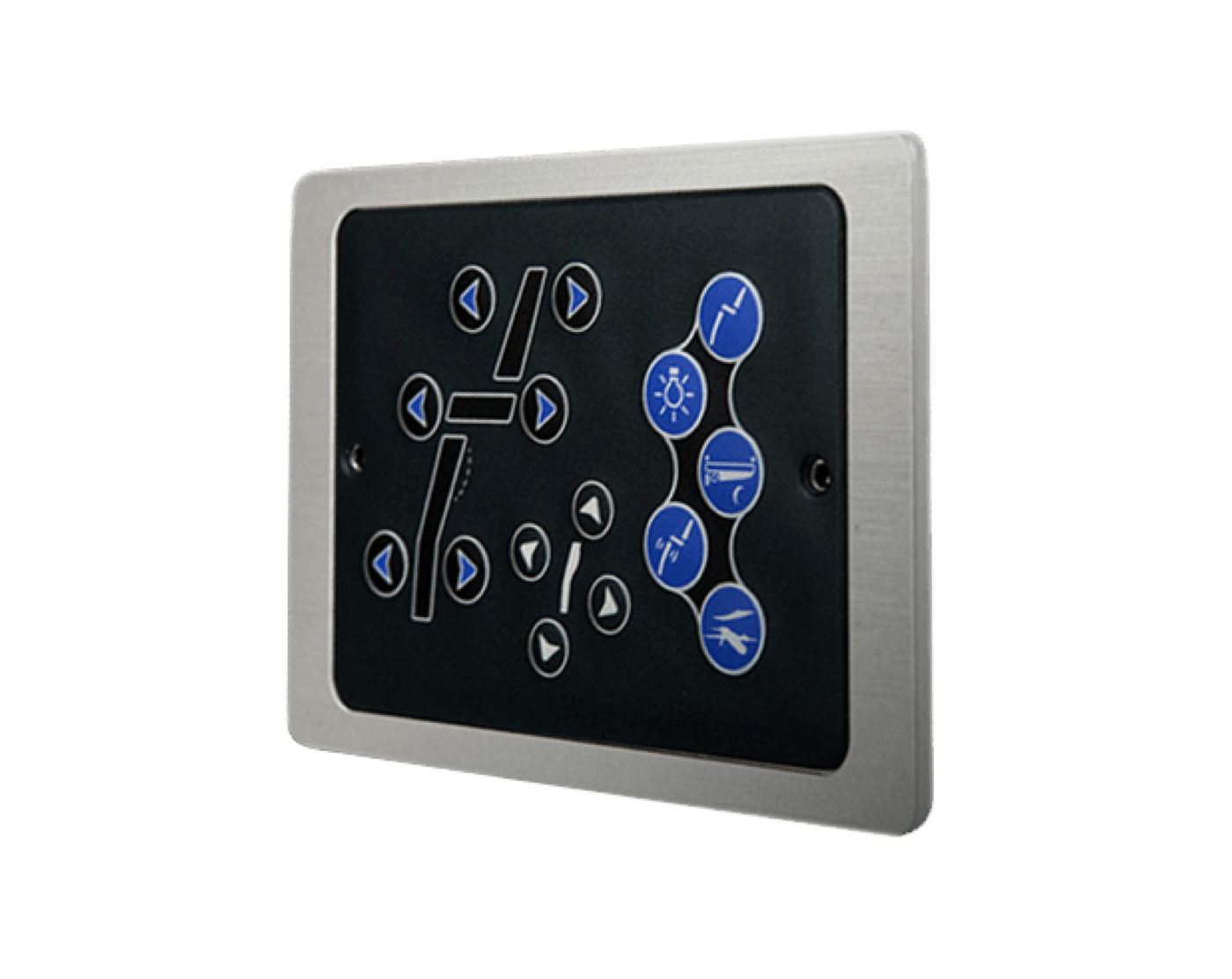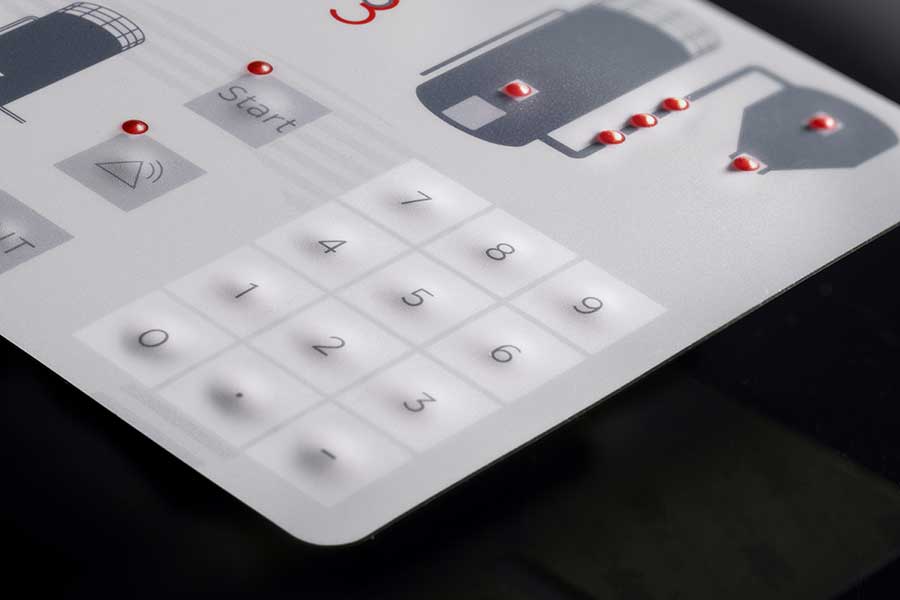How Membrane Switches Improve Durability in Harsh Environments
Wiki Article
Discover How Membrane Switches Feature and Their Duty in Modern Electronic Devices
Membrane Switches stand for an innovative integration of modern technology and layout within the realm of contemporary electronic devices, functioning as crucial user interfaces in many devices. Consisted of multiple layers, these buttons use pressure-sensitive systems to help with customer communication. Their applications extend different sectors, from customer electronic devices to medical tools, highlighting their adaptability and importance. Comprehending the intricacies of Membrane switch functionality and their more comprehensive ramifications in enhancing customer experience welcomes additional expedition right into their layout, advantages, and the cutting-edge growths forming their future in modern technology.
What Are Membrane Buttons?

Membrane buttons are distinguished by their toughness and resistance to environmental elements, such as dirt, wetness, and severe temperatures. They can be personalized with different graphics, colors, and tactile feedback options, improving customer experience while maintaining aesthetic allure - membrane switches. The unification of printed circuits permits for seamless assimilation into gadgets, boosting overall functionality.
The flexibility of Membrane switches appears in their capacity to support both complex and simple control features. They can incorporate functions such as LED indications and touch-sensitive modern technology, accommodating specific user demands. As technology proceeds to advance, Membrane Switches remain crucial for allowing intuitive and effective interface, thereby playing an essential duty in the advancement of modern-day electronic tools.
Parts of Membrane Buttons
Membrane switches are made up of a number of crucial elements that collaborate to produce a dependable and useful user interface. The key elements consist of the graphic overlay, sticky layer, spacer layer, and conductive traces.The visuals overlay acts as the interface, normally printed on an adaptable substratum such as polyester or polycarbonate. This layer not just provides aesthetic charm but additionally includes responsive comments, visual signs, and safety attributes. Beneath the graphic overlay exists the adhesive layer, which protects the switch to the device and makes certain resilience versus ecological stresses.
The spacer layer is crucial for preserving the necessary space between the graphic overlay and the circuit layer. This void enables for the activation of the switch when stress is applied. The conductive traces, generally made from silver or carbon, create the electrical paths that complete the circuit when the button is engaged.
Furthermore, a support layer might be consisted of for architectural support and insulation. These components work together effortlessly, ensuring that Membrane switches are both user-friendly and durable, making them essential in numerous modern electronic applications.
How Membrane Switches Work
Exactly how do Membrane Switches function effectively within electronic devices? Membrane my explanation Switches operate on the principles of pressure-sensitive innovation, making use of a layered building that includes visuals overlays, glue layers, and conductive components. When an individual applies pressure to the button, the top layer warps, allowing the conductive aspects under to make get in touch with and finish an electric circuit. This action activates the preferred function within the device.The design of Membrane buttons is important for their effective operation (membrane switches). The layers are meticulously crafted to give tactile responses, resilience, and resistance to environmental factors such as dampness and dust. The inclusion of domes-- tiny, increased areas within the switch-- enhances responsive feedback, offering customers with an obvious click sensation upon activation
Additionally, Membrane switches can be personalized in terms of dimension, shape, and graphics, making them appropriate for different applications. They are frequently utilized in control panels, medical devices, and customer electronic devices because of their sleek layout and integrity. In general, the reliable performance of Membrane buttons is pivotal in boosting user communication and making sure seamless procedure in modern electronic tools.

Applications in Modern Instruments
Using their unique style and functionality, Membrane buttons have actually ended up being indispensable components in a variety of contemporary electronic tools. These functional user interfaces are employed in consumer electronic devices, industrial equipment, clinical gadgets, and vehicle controls, providing seamless user interaction.In consumer electronics, Membrane switches are generally located in appliances like microwaves, washing devices, and other family tools, where they allow user-friendly control with a smooth account. Their low-profile design helps with combination into compact tools, enhancing visual charm without jeopardizing capability.
In industrial applications, Membrane Switches serve as control board for machinery, providing durability and resistance to extreme environments. Their capability to stand up to wetness and pollutants makes them perfect for use in manufacturing and processing Home Page industries.
Medical devices additionally take advantage of Membrane buttons, which are developed to be very easy to tidy and preserve, making certain hygiene in medical settings. They are commonly used in diagnostic tools, client surveillance systems, and portable clinical gadgets, where dependability is paramount.
Advantages of Membrane Switches
One of the essential advantages of Membrane buttons is their convenience, which allows them to be tailored for a selection of applications throughout numerous markets. These buttons can be made in different sizes and shapes, suiting special product demands while offering smooth combination right into tools. Their slim account makes it possible for a portable and sleek design, commonly enhancing the aesthetic allure of electronic items.Another considerable benefit is their resilience - membrane switches. Membrane buttons are normally immune to dust, dampness, and chemicals, making them optimal for rough settings. This durability extends their lifespan compared to traditional mechanical buttons, reducing the requirement for regular replacements
In addition, Membrane Switches offer cost-effectiveness. The production procedure involves printing technologies that reduce production expenses, especially for huge runs. This cost, combined with low maintenance demands, makes them an appealing choice for suppliers.

Conclusion
In final thought, Membrane Switches stand for a significant advancement in customer interface innovation within contemporary electronics. As the need for resistant and instinctive interfaces proceeds to grow, the duty of Membrane switches in forming customer experience will undoubtedly increase.Membrane Switches represent an innovative integration of innovation and layout within the world of modern electronics, offering as important user interfaces in many gadgets.In the realm of contemporary electronics, Membrane Switches offer as essential components that help with user go to the website interaction with devices. As technology continues to evolve, Membrane Switches continue to be necessary for enabling efficient and intuitive individual interfaces, therefore playing an essential function in the innovation of modern-day electronic tools.
Exactly how do Membrane Switches feature successfully within electronic gadgets? Generally, the efficient functioning of Membrane switches is crucial in boosting individual communication and ensuring seamless procedure in contemporary electronic devices.
Report this wiki page